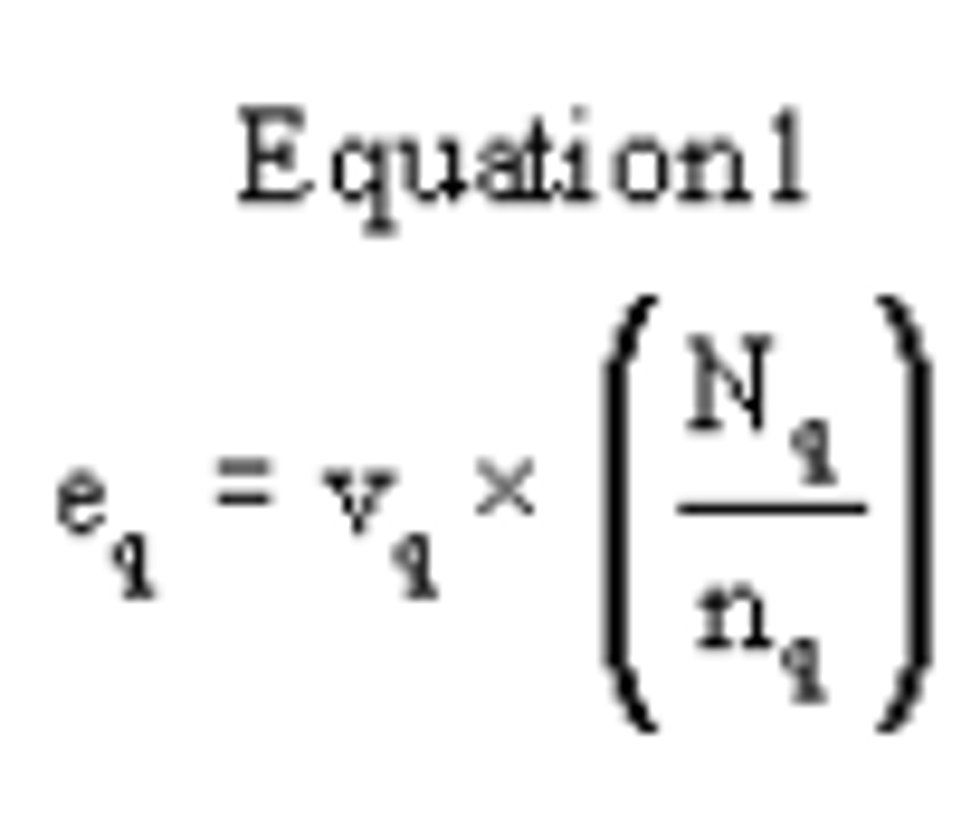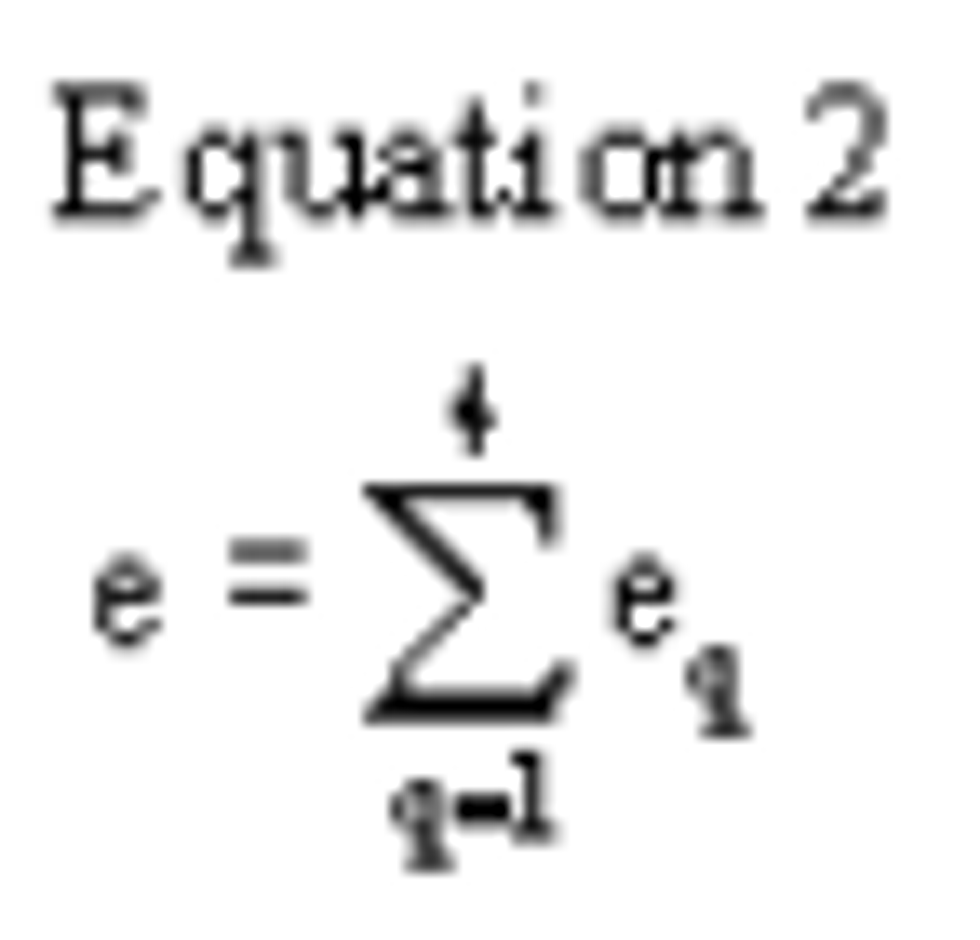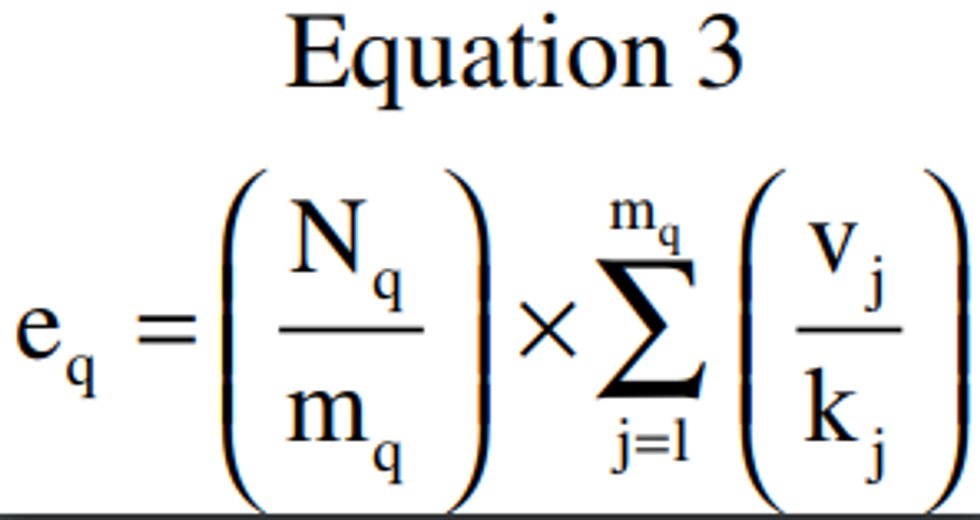['Air Programs']
['Criteria Air Pollutants', 'Air Quality']
05/13/2025
...
1.0 General
(a) This appendix explains the computations necessary for analyzing particulate matter data to determine attainment of the 24-hour standards specified in 40 CFR 50.6. For the primary and secondary standards, particulate matter is measured in the ambient air as PM10 (particles with an aerodynamic diameter less than or equal to a nominal 10 micrometers) by a reference method based on appendix J of this part and designated in accordance with §53.11 of this chapter, or by an equivalent method designated in accordance with §53.11 of this chapter. The required frequency of measurements is specified in §53.11 of this chapter.
(b) The terms used in this appendix are defined as follows:
Average refers to the arithmetic mean of the estimated number of exceedances per year, as per section 3.1 of this appendix.
Collocated monitors refer to two or more air measurement instruments for the same parameter (e.g., PM 10 mass) operated at the same site location, and whose placement is consistent with part 53 of this chapter. For purposes of considering a combined site record in this appendix, when two or more monitors are operated at the same site, one monitor is designated as the “primary” monitor with any additional monitors designated as “collocated.” It is implicit in these appendix procedures that the primary monitor and collocated monitor(s) are all reference or equivalent methods; however, it is not a requirement that the primary and collocated monitors utilize the same specific sampling and analysis method.
Combined site data record is the data set used for performing computations in this appendix and represents data for the primary monitors augmented with data from collocated monitors according to the procedure specified in section 3.0(a) of this appendix.
Daily value for PM 10 refers to the 24-hour average concentration of PM 10 calculated or measured from midnight to midnight (local time).
Exceedance means a daily value that is above the level of the 24-hour standard after rounding to the nearest 10 µg/m 3 i.e., values ending in 5 or greater are to be rounded up).
Expected annual value is the number approached when the annual values from an increasing number of years are averaged, in the absence of long-term trends in emissions or meteorological conditions.
Primary monitors are suitable monitors designated by a State or local agency in their annual network plan as the default data source for creating a combined site data record. If there is only one suitable monitor at a particular site location, then it is presumed to be a primary monitor.
Year refers to a calendar year.
(c) Although the discussion in this appendix focuses on monitored data, the same principles apply to modeling data, subject to EPA modeling guidelines.
2.0 Attainment Determinations
2.1 24-Hour Primary and Secondary Standards
(a) Under 40 CFR 50.6(a) the 24-hour primary and secondary standards are attained when the expected number of exceedances per year at each monitoring site is less than or equal to one. In the simplest case, the number of expected exceedances at a site is determined by recording the number of exceedances in each calendar year and then averaging them over the past 3 calendar years. Situations in which 3 years of data are not available and possible adjustments for unusualevents or trends are discussed in sections 2.3 and 2.4 of this appendix. Further, when data for a year are incomplete, it is necessary to compute an estimated number of exceedances for that year by adjusting the observed number of exceedances. This procedure, performed by calendar quarter, is described in section 3.0 of this appendix. The expected number of exceedances is then estimated by averaging the individual annual estimates for the past 3 years.
(b) The comparison with the allowable expected exceedance rate of one per year is made in terms of a number rounded to the nearest tenth (fractional values equal to or greater than 0.05 are to be rounded up; e.g., an exceedance rate of 1.05 would be rounded to 1.1, which is the lowest rate for nonattainment).
2.2 Reserved
2.3 Data Requirements
(a) 40 CFR 58.12 specifies the required minimum frequency of sampling for PM10. For the purposes of making comparisons with the particulate matter standards, all data produced by State and Local Air Monitoring Stations (SLAMS) and other sites submitted to EPA in accordance with the §53.11 requirements must be used, and a minimum of 75 percent of the scheduled PM10 samples per quarter are required.
(b) To demonstrate attainment of the 24-hour standards at a monitoring site, the monitor must provide sufficient data to perform the required calculations of sections 3.0 and 4.0 of this appendix. The amount of data required varies with the sampling frequency, data capture rate and the number of years of record. In all cases, 3 years of representative monitoring data that meet the 75 percent criterion of the previous paragraph should be utilized, if available, and would suffice. More than 3 years may be considered, if all additional representative years of data meeting the 75 percent criterion are utilized. Data not meeting these criteria may also suffice to show attainment; however, such exceptions will have to be approved by the appropriate Regional Administrator in accordance with EPA guidance.
(c) There are less stringent data requirements for showing that a monitor has failed an attainment test and thus has recorded a violation of the particulate matter standards. Although it is generally necessary to meet the minimum 75 percent data capture requirement per quarter to use the computational equations described in section 3.0 of this appendix, this criterion does not apply when less data is sufficient to unambiguously establish nonattainment. The following examples illustrate how nonattainment can be demonstrated when a site fails to meet the completeness criteria. Nonattainment of the 24-hour primary standards can be established by the observed annual number of exceedances (e.g., four observed exceedances in a single year), or by the estimated number of exceedances derived from the observed number of exceedances and the required number of scheduled samples (e.g., two observed exceedances with every other day sampling). In both cases, expected annual values must exceed the levels allowed by the standards.
(d) 24-hour average concentrations will be computed from submitted hourly PM 10 concentration data for each corresponding day of the year and the result will be stored in the first, or start, hour ( i.e., midnight, hour `0') of the 24-hour period. A 24-hour average concentration shall be considered valid if at least 75 percent of the hourly averages ( i.e., 18 hourly values) for the 24-hour period are available. In the event that fewer than all 24 hourly average concentrations are available ( i.e., fewer than 24 but at least 18), the 24-hour average concentration shall be computed on the basis of the hours available using the number of available hours within the 24-hour period as the divisor ( e.g., the divisor is 19 if 19 hourly values are available). 24-hour periods with 7 or more missing hours shall also be considered for computations in this appendix if, after substituting zero for all missing hourly concentrations, the resulting 24-hour average daily value exceeds the level of the 24-hour standard specified in §50.6 after rounding to the nearest 10 µg/m 3 .
2.4 Adjustment for Exceptional Events and Trends
(a) An exceptional event is an uncontrollable event caused by natural sources of particulate matter or an event that is not expected to recur at a given location. Inclusion of such a value in the computation of exceedances or averages could result in inappropriate estimates of their respective expected annual values. To reduce the effect of unusual events, more than 3 years of representative data may be used. Alternatively, other techniques, such as the use of statistical models or the use of historical data could be considered so that the event may be discounted or weighted according to the likelihood that it will recur. The use of such techniques is subject to the approval of the appropriate Regional Administrator in accordance with EPA guidance.
(b) In cases where long-term trends in emissions and air quality are evident, mathematical techniques should be applied to account for the trends to ensure that the expected annual values are not inappropriately biased by unrepresentative data. In the simplest case, if 3 years of data are available under stable emission conditions, this data should be used. In the event of a trend or shift in emission patterns, either the most recent representative year(s) could be used or statistical techniques or models could be used in conjunction with previous years of data to adjust for trends. The use of less than 3 years of data, and any adjustments are subject to the approval of the appropriate Regional Administrator in accordance with EPA guidance.
3.0 Computational Equations for the 24-Hour Standards
(a) All computations shown in this appendix shall be implemented on a site-level basis. Site level concentration data shall be processed as follows:
(1) The default dataset for PM 10 mass concentrations for a site shall consist of the measured concentrations recorded from the designated primary monitor(s). All daily values produced by the primary monitor are considered part of the site record.
(2) If a daily value is not produced by the primary monitor for a particular day, but a value is available from a single collocated monitor, then that collocated monitor value shall be considered part of the combined site data record. If daily value data is available from two or more collocated monitors, the average of those collocated values shall be used as the daily value. The data record resulting from this procedure is referred to as the “combined site data record.”
(b) In certain circumstances, including but not limited to site closures or relocations, data from two nearby sites may be combined into a single site data record for the purpose of calculating a valid design value. The appropriate Regional Administrator may approve such combinations if the Regional Administrator determines that the measured concentrations do not differ substantially between the two sites, taking into consideration factors such as distance between sites, spatial and temporal patterns in air quality, local emissions and meteorology, jurisdictional boundaries, and terrain features.
3.1 Estimating Exceedances for a Year
(a) If PM10 sampling is scheduled less frequently than every day, or if some scheduled samples are missed, a PM10 value will not be available for each day of the year. To account for the possible effect of incomplete data, an adjustment must be made to the data collected at each monitoring location to estimate the number of exceedances in a calendar year. In this adjustment, the assumption is made that the fraction of missing values that would have exceeded the standard level is identical to the fraction of measured values above this level. This computation is to be made for all sites that are scheduled to monitor throughout the entire year and meet the minimum data requirements of section 2.3 of this appendix. Because of possible seasonal imbalance, this adjustment shall be applied on a quarterly basis. The estimate of the expected number of exceedances for the quarter is equal to the observed number of exceedances plus an increment associated with the missing data. The following equation must be used for these computations:

Where:
eq = the estimated number of exceedances for calendar quarter q;
vq = the observed number of exceedances for calendar quarter q;
Nq = the number of days in calendar quarter q;
nq = the number of days in calendar quarter q with PM10 data; and
q = the index for calendar quarter, q = 1, 2, 3 or 4.
(b) The estimated number of exceedances for a calendar quarter must be rounded to the nearest hundredth (fractional values equal to or greater than 0.005 must be rounded up).
(c) The estimated number of exceedances for the year, e, is the sum of the estimates for each calendar quarter.

(d) The estimated number of exceedances for a single year must be rounded to one decimal place (fractional values equal to or greater than 0.05 are to be rounded up). The expected number of exceedances is then estimated by averaging the individual annual estimates for the most recent 3 or more representative years of data. The expected number of exceedances must be rounded to one decimal place (fractional values equal to or greater than 0.05 are to be rounded up).
(e) The adjustment for incomplete data will not be necessary for monitoring or modeling data which constitutes a complete record, i.e., 365 days per year.
(f) To reduce the potential for overestimating the number of expected exceedances, the correction for missing data will not be required for a calendar quarter in which the first observed exceedance has occurred if:
(1) There was only one exceedance in the calendar quarter;
(2) Everyday sampling is subsequently initiated and maintained for 4 calendar quarters in accordance with 40 CFR 58.12; and
(3) Data capture of 75 percent is achieved during the required period of everyday sampling. In addition, if the first exceedance is observed in a calendar quarter in which the monitor is already sampling every day, no adjustment for missing data will be made to the first exceedance if a 75 percent data capture rate was achieved in the quarter in which it was observed.
Example 1
a. During a particular calendar quarter, 39 out of a possible 92 samples were recorded, with one observed exceedance of the 24-hour standard. Using Equation 1, the estimated number of exceedances for the quarter is:
eq = 1 × 92/39 = 2.359 or 2.36.
b. If the estimated exceedances for the other 3 calendar quarters in the year were 2.30, 0.0 and 0.0, then, using Equation 2, the estimated number of exceedances for the year is 2.36 + 2.30 + 0.0 + 0.0 which equals 4.66 or 4.7. If no exceedances were observed for the 2 previous years, then the expected number of exceedances is estimated by: ( 1/3) × (4.7 + 0 + 0) = 1.57 or 1.6. Since 1.6 exceeds the allowable number of expected exceedances, this monitoring site would fail the attainment test.
Example 2
In this example, everyday sampling was initiated following the first observed exceedance as required by 40 CFR 58.12. Accordingly, the first observed exceedance would not be adjusted for incomplete sampling. During the next three quarters, 1.2 exceedances were estimated. In this case, the estimated exceedances for the year would be 1.0 + 1.2 + 0.0 + 0.0 which equals 2.2. If, as before, no exceedances were observed for the two previous years, then the estimated exceedances for the 3-year period would then be ( 1/3) × (2.2 + 0.0 + 0.0) = 0.7, and the monitoring site would not fail the attainment test.
3.2 Adjustments for Non-Scheduled Sampling Days
(a) If a systematic sampling schedule is used and sampling is performed on days in addition to the days specified by the systematic sampling schedule, e.g., during episodes of high pollution, then an adjustment must be made in the equation for the estimation of exceedances. Such an adjustment is needed to eliminate the bias in the estimate of the quarterly and annual number of exceedances that would occur if the chance of an exceedance is different for scheduled than for non-scheduled days, as would be the case with episode sampling.
(b) The required adjustment treats the systematic sampling schedule as a stratified sampling plan. If the period from one scheduled sample until the day preceding the next scheduled sample is defined as a sampling stratum, then there is one stratum for each scheduled sampling day. An average number of observed exceedances is computed for each of these sampling strata. With nonscheduled sampling days, the estimated number of exceedances is defined as:

Where:
eq = the estimated number of exceedances for the quarter;
Nq = the number of days in the quarter;
mq = the number of strata with samples during the quarter;
vj = the number of observed exceedances in stratum j; and
kj = the number of actual samples in stratum j.
(c) Note that if only one sample value is recorded in each stratum, then Equation 3 reduces to Equation 1.
Example 3
A monitoring site samples according to a systematic sampling schedule of one sample every 6 days, for a total of 15 scheduled samples in a quarter out of a total of 92 possible samples. During one 6-day period, potential episode levels of PM10 were suspected, so 5 additional samples were taken. One of the regular scheduled samples was missed, so a total of 19 samples in 14 sampling strata were measured. The one 6-day sampling stratum with 6 samples recorded 2 exceedances. The remainder of the quarter with one sample per stratum recorded zero exceedances. Using Equation 3, the estimated number of exceedances for the quarter is:
Eq = (92/14) × (2/6 + 0 + . . . + 0) = 2.19.
[71 FR 61224, Oct. 17, 2006; 89 FR 16380, March 6, 2024]
['Air Programs']
['Criteria Air Pollutants', 'Air Quality']
UPGRADE TO CONTINUE READING
Load More
J. J. Keller is the trusted source for DOT / Transportation, OSHA / Workplace Safety, Human Resources, Construction Safety and Hazmat / Hazardous Materials regulation compliance products and services. J. J. Keller helps you increase safety awareness, reduce risk, follow best practices, improve safety training, and stay current with changing regulations.
Copyright 2025 J. J. Keller & Associate, Inc. For re-use options please contact copyright@jjkeller.com or call 800-558-5011.
